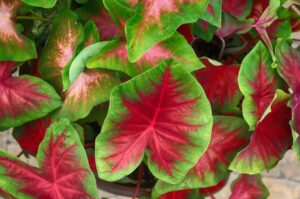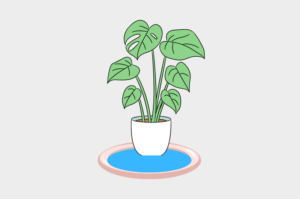How to save a dying staghorn fern?
Staghorn fern (Platycerium bifurcation) have increasingly become popular as house plants. They can either be mounted or hung on a wall or wrapped in burlap with their stunning appearance. These beautiful ferns are an example of living artwork. There are multiple fern species, and it is easy to care for and propagate these ferns.
If you notice your Staghorn fern dying, place it in sunlight, water them regularly, they love being soaked in water, and keep them in a 50-100 degrees temperature range. Additionally, feed them with slow-release fertilizers and avoid mounting them.
Though these epiphytic beauties demand less care, you cannot ignore them, or else they start dying. This article discusses all the possible ways to save a dying Staghorn fern in detail.
What is a Staghorn fern?
While many of you may think it to be an average plant because the young ferns are sold in small pots, they have to be wall-mounted on a board or hung in a basket?
But why is it so?
It is because Staghorn ferns are epiphytic, i.e., the plants that grow on nearby trees if they are in their natural environments. Their roots are strong enough to hold them in place while they dramatically invade through the trees. In addition, they use their fronds to absorb nutrients and water.
Understanding the anatomy of Staghorn ferns
Staghorn ferns are entirely different from other plants; they even differ from other fern species. That’s why it is a daunting task to take care of them.
Let’s find out how they are anatomically different from other plants.
- Like other plants, they neither reproduce through flowers or seeds but release microscopic spores into the atmosphere. These spores grow into new plants.
- Their leaves are called fronds. Staghorn has two types of fronds: Antler fronds, Shield fronds.
- Antler fronds are large, bifurcated and the most prominent leaves shooting out from the center of the fern. These fronds look like deer antlers hence the name antler fronds.
- The ferns develop spores on the inner side of these fronds and appear like brown fuzz. Removing these spores is a big no!
- Shield fronds are another type of fronds that the fern has. These leaves surround the base and are hard, round, and look like a plate. Their function is to protect the fern’s roots and take up essential nutrients and water from the soil.
Initially, these fronds are green but eventually dry up and turn brown with time. It is a part of the normal life cycle of Staghorn fern.
A common misconception regarding Staghorn care is that the brown frond means the plant is dying. No, it’s not dying; instead, it is completing its life cycle and hence it should not be removed.
The last part of the plant is the root ball. Epiphytes have a minimal root system and require extensive drainage; otherwise, they die of root rot.
How to save a dying Staghorn fern?
Avoid over and under-watering.
Water plays a crucial role in saving your dying Staghorn fern. Your plant will die either if you are underwater or overwater it.
Though there is no rocket science involved in watering your fern, certain factors decide how much water a Staghorn fern needs. These factors include humidity, light, and heat they are receiving.
However, there are specific rules you should follow to save your fern from dying.
- Water once in a hot atmosphere and once in two to three weeks in a colder environment.
- These ferns appreciate misting, so keep them in humid places like bathrooms to reduce watering and misting often.
- During fall and summer, mist your plant regularly; they are not used to withstand drought.
- In winters, cut back your water supply.
- If you notice the antler fronds turning brown, it indicates overwatering. Immediately reduce watering until the plant shows signs of recovery.
- But if the antler fronds begin turning brown at the tip or show wilting, this indicates underwatering. So, increase the supply of water to avoid this problem.
Your water regimen includes two processes: soaking and misting.
Soaking:
- Soak your fern in a water basin for 10-20 minutes to thoroughly saturate the roots.
- Alternatively, you can also place your fern in a bathtub or sink and allow water to run through it till the roots are saturated. Remember, the water should be at room temperature.
Misting:
Another attempt to save your dying fern is to mist the fern.
- A spray bottle emitting a fine mist.
- Practice misting the entire plant, mainly the underside of the shield and under fronds.
Appropriate temperature
Place your Staghorn fern at the appropriate temperatures to prevent it from dying. The temperature should not drop below 50 degrees and not above 100 degrees. Do not place them directly under the sun, and keep them well watered.
However, your ferns do not admire chilly nights, so bring them inside at night.
Sufficient humidity
Staghorn ferns are erratic beasts; neither do they tolerate high temperatures nor like lots of water on their roots. They grow best in a greenhouse atmosphere. So try keeping your plant in elevated humidity levels like the basement or bathroom.
And if you can’t do so, place a water-filled bowl near the plant to increase humidity. The roots don’t need to be immersed in water, but the evaporating water will keep the plant humid.
Adequate sunlight
Being native to tropical regions, they enjoy bright and indirect sunlight. Therefore, keeping them in direct, harsh sunlight is a big no. And while keeping them indoors, always try to keep them near the window that receives indirect sunlight.
But sorry to disappoint you if you think your Staghorn fern will dwell in artificial light! They’ll die if they do not receive natural light.
Add fertilizers
If you notice your Staghorn fern dying, try to revive it by adding fertilizers. Fertilizers promote strenuous growth. Feed with balanced and water-soluble fertilizers. During their dormant period, reduce fertilizing to alternate months.
You can also feed your Staghorn by placing a banana peel under the shield front, according to an unpopular opinion.
Try remounting your fern.
These plants are meant to be permanently installed, therefore remounting is not recommended. But if the shield fronds begin creeping to the edges, fix your fern board to a wooden piece with the help of nails.
Be cautious not to nail the rootball or shield front while remounting.
Respond promptly to the ferns problems
Like any other plant, Staghorn fern is attacked mainly by root rot caused by Rhizoctonia in wet conditions. But the plant doesn’t seem ok one day, and the other day it’s dead! So, no, it doesn’t happen like that.
It starts showing signals when it is affected by root rot. This provides you with ample time to take action. Else the rot may spread to the whole plant, and eventually, the plant dies.
Several trouble signs should catch your attention. For example:
- Antler frond turning brown due to overwatering
- If only their tip turns brown and wilt, it means it is under strain
- If the leaves turn brown or pale green., that means the plant is absorbing more sunlight.
- If you notice a soft stem turned black, you are too late to save your plant.
- Black fronds indicate that the plant is fighting against Rhizoctonia.
Sap sucking bugs
Generally, pests like scales and mealybugs can potentially bring an early demise to your fern. This is because they actively feed on the inner side of the leaves, causing significant damage in a short time.
So as soon as you spot them, immediately treat the plant with a non-oil-based insecticide.
In a gist, we come to the following conclusion to save our Staghorn fern from dying:
- First, identify fronds and remove dead leaves.
- Then, look for pest infestation under the base of the foliage.
- Look for any indication of overwatering. This can be best identified by looking at the black and brown spots on the pinnae(the shield between every antler is called pinnae)
- Make sure shield and antler fronds are not touching each other. It causes a hindrance to air circulation. In such a case, you can gently separate them.
- Do not provide them with direct sunlight else it may cause sunburn.
- Routinely mist your fern every three to four days. It will help maintain the humidity level and keep the plant updated.
- Feed them with fertilizer every two months.
- Although repotting is not recommended, repot it if the roots are overgrowing the pot in the spring season.
- Select a pot with enough drainage consisting of perlite, sphagnum moss, and charcoal.
- Grow your Staghorn in a humid environment, replicating its natural habitat. You can use a tray filled with water underneath your pot to keep it hydrated.
- It would be best if you cut off the shield fronds as soon as they die to prevent the spread of any disease.
- These ferns are not susceptible to pets, but Rhizoctonia’s disorder loves to attack the plant. And it usually happens when the plant is kept in a too damp environment. There are black spots on fronds located at the base, and then the infection spreads quickly to the entire plant, eventually killing it.
Wrap up
A watering regime is usually associated with the dying of your Staghorn fern. Too much water causes a fungal infection, leading to black spots on the shield fronds. Your Staghorn fern is dead when its entire base has gone black.
However, the plant may die too due to dehydration. If you are not providing sufficient water to your plant, the roots and the antler fronds become dry and ultimately die. So, in a nutshell, water the plant adequately, use the correct type of soil, and place them under indirect sunlight to prevent them from dying.






